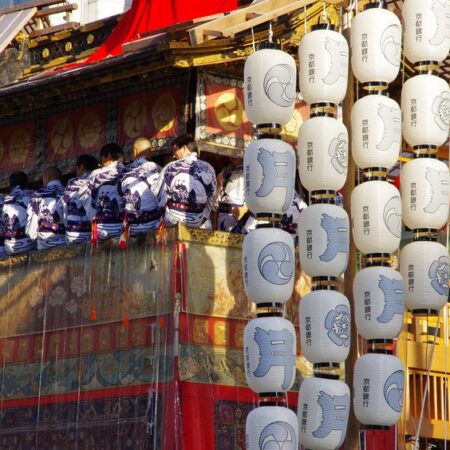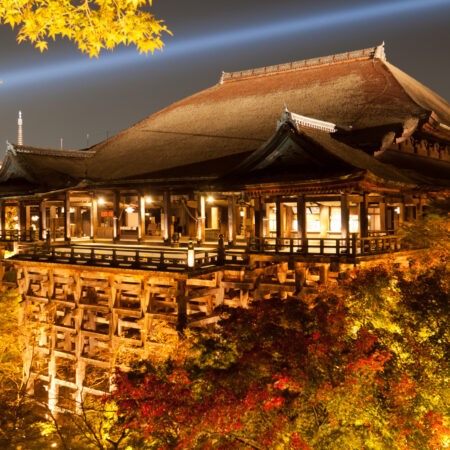Do you know how many shrines and temples are currently in Japan (as of November 2022)? It is said that there are about 88,000 shrines and 77,000 temples. Considering the total number of the convenience stores of all the brands is about 57,000, this number of shrines and temples is astonishingly remarkable.
Temple
The number of shrines and temples
The origin of shrines
The origin of shrines (Shinto) is said to have originated from rice farming that was introduced from the end of the Jomon period to the Yayoi period about 2,300 years ago, and that "nature worship", which considers nature to be one with the gods, spread throughout the Japanese archipelago. This nature worship was treated as a national ritual by the Yamato sovereignty during the Kofun period, which began 1700 years ago, and spread throughout Japan. Rituals were held at Munakata Taisha Shrine (Fukuoka) and Omiwa Shrine (Nara), which are said to be the earliest shrines, and the prototype of Shinto was formed. Shinto traces its origins to "ancient Japan" and can be said to be a religion that has had a great influence on the formation of the nation of Japan to the present day.
No scriptures, no specific, no founder...
There are no scriptures, no specific teachings, and no founder. It is an animistic, ancestor-worshipping folk religion based on myths, “eight million gods”, nature and natural phenomena. Nature and gods are recognized as one, and rituals are the specific manners that connect gods and humans, and the places, where these rituals are performed, are at the shrines and sacred grounds. In ancient times, people believed that gods resided in mysteriously shaped mountains and rocks. In nature worship, shrines were later created as sanctuaries where gods resided, and with the addition of political colors such as the union of clans and state control, those in power began to use them as tools to control the people.
Appearance in the Hollywood movie
Japan's ancient politics relied on the power of primitive beliefs, and it is said that people who possessed sorcery that could influence the will of the gods assumed the highest powers. "Queen Himiko", which was featured in the Hollywood movie "TUMB RIDER 2", is one of them. The fox enshrined in Fushimi Inari, in Kyoto, which became famous for the "Senbon Torii (a thousand red gates)" featured in the movie, "MEMORY OF GEISHA" visited by a large number of foreigners, has also been deified and is considered to be a messenger of the gods. In any case, politics and festivals are two sides of the same coin.
The origin of Buddhism
Buddhism, on the other hand, is said to have been introduced from Baekje in 538 AD (or in 552 in the book of Nihonshoki), but the time of introduction and the region of origin differ depending on the sect. In modern times, Buddhism and Shinto are distinguished, but until about 150 years ago, Buddha and God were united (Shinbutsu-shugo). There are 13 sects of Buddhism, and according to statistics from the Agency for Cultural Affairs, the majority of Buddhists in Japan today belong to the so-called Kamakura Buddhism, with the Jodo sect (Jodo Shinshu) and the Nichiren sect making up the majority. Mahayana Buddhism is said to be the most common. In addition, it is said that there are about 77,000 temples and more than 300,000 Buddha statues in Japan. Shitennoji Temple (Osaka), Japan's oldest official temple, and Horyuji Temple (Nara), the world's oldest wooden temple, are located in Kansai.
Buddhism and the Japanese
It may be difficult for foreigners to understand the fact that although about 85 million people in Japan are Buddhists according to some statistics, most of the modern Japanese actually do not have a specific religion or religious view, and they themselves are Buddhists. It is said that there are few opportunities to be strongly conscious of it. In fact, many people visit shrines during the New Year holiday season, celebrate Christmas, and arrange Buddhist funerals when they pass away. In general, there are statistics that 99% of Japanese people are Buddhists in a broad sense, but the number is not clear.
Churches and temples
In Western countries, in the center of the old city, there is a church and it is a symbolic existence of the town, but I think that the significant meaning how and why those Japanese temples and shrines have existed over thousands of the history really depends on the efforts of the public and private sectors together with the authorities in the tourism industry in the future. Why don't you join us in visiting these shrines and temples that are strongly linked to the history of Japan and the spirituality of the Japanese people?






